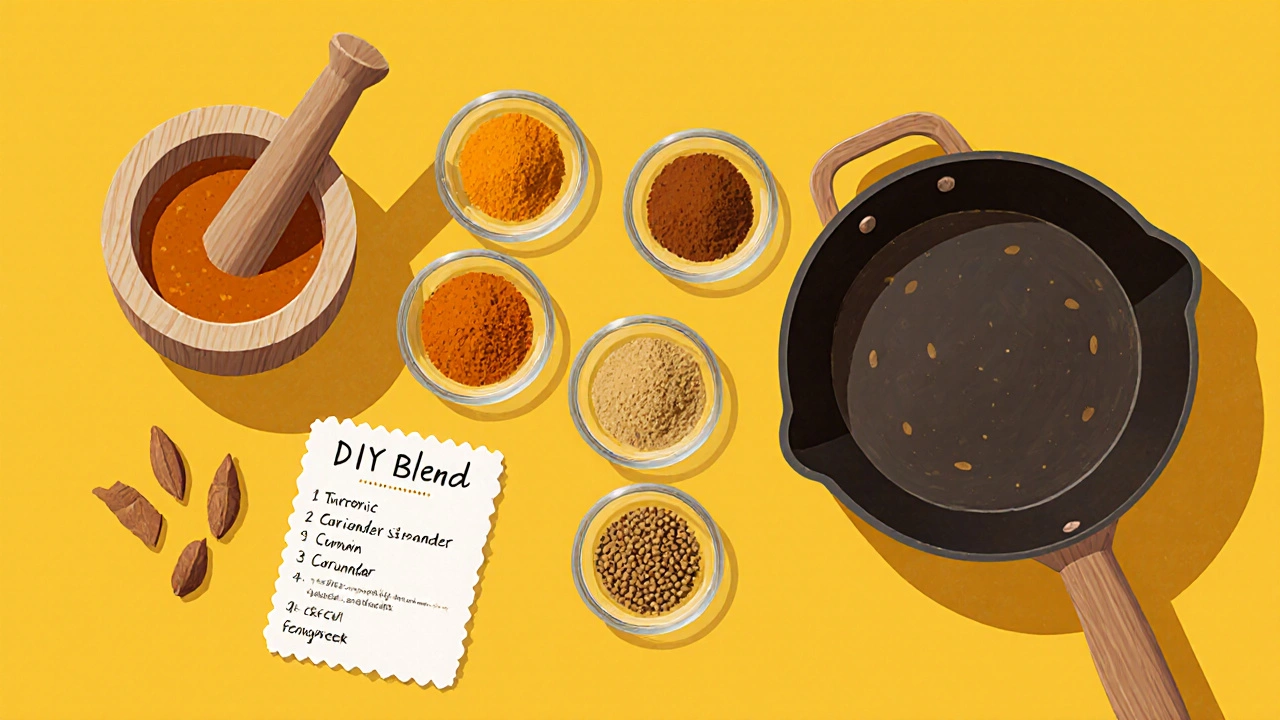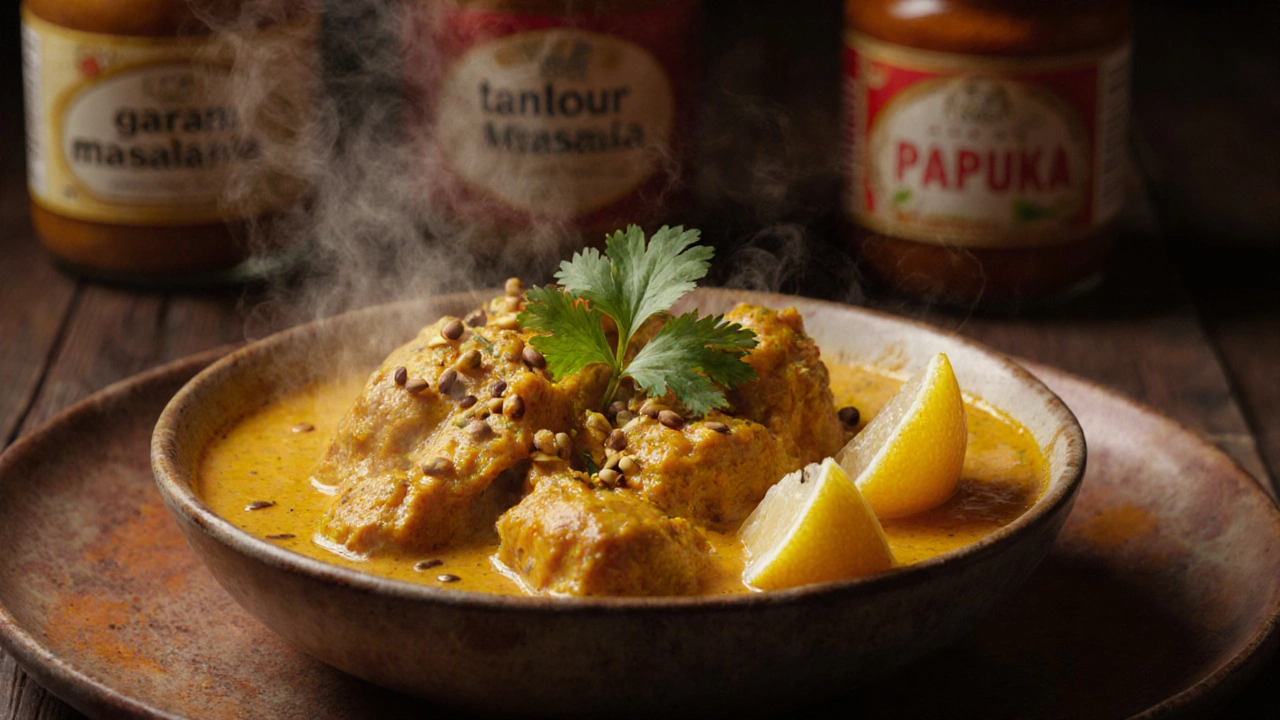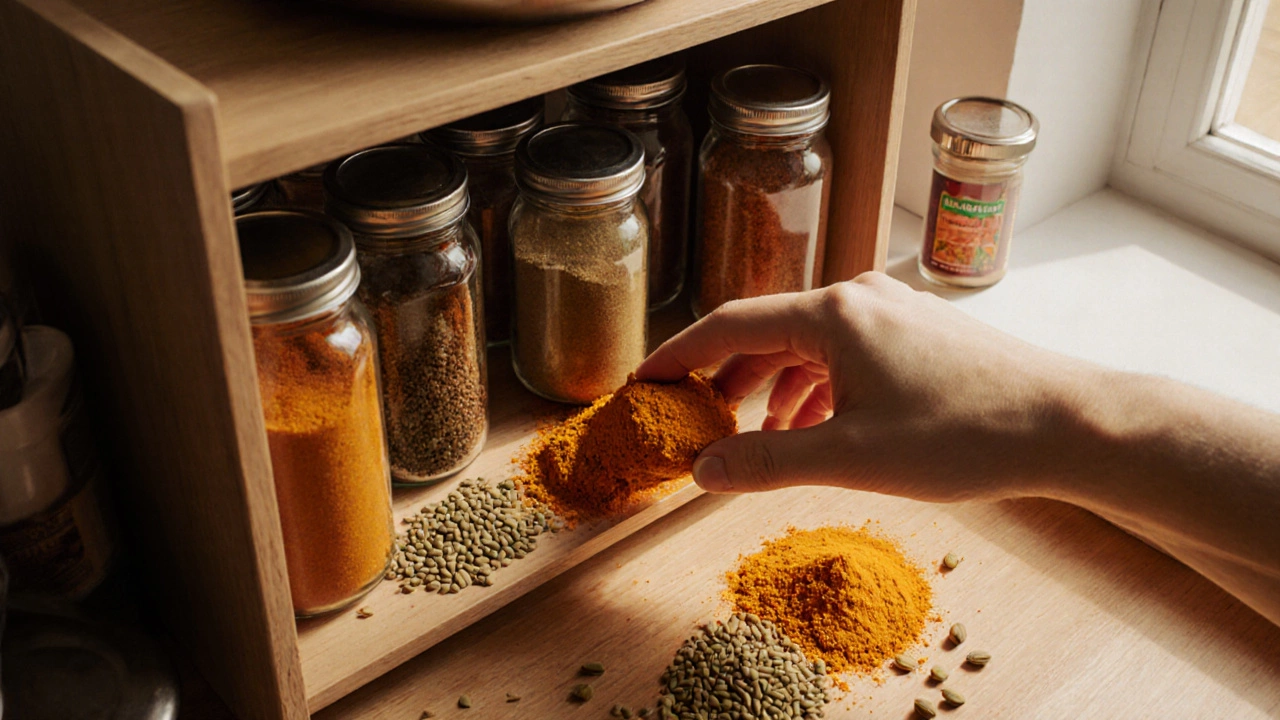Ever opened your spice rack and realized you’re out of curry powder substitute just before dinner? It happens to the best of us, and the panic that follows can ruin a good meal plan. The good news is you don’t need a magic pantry makeover - a handful of common spices can step in and deliver a flavor profile that’s surprisingly close.
What is curry powder?
curry powder is a blend of ground spices traditionally used in South Asian cooking, typically featuring turmeric, cumin, coriander, fenugreek, and a touch of heat from chili. Its bright yellow hue comes mainly from turmeric, while cumin and coriander add earthy depth. The exact mix varies by region, but the core idea is a balanced, aromatic blend that can enhance everything from lentils to chicken.
Why you might need a substitute
Running out of curry powder isn’t the only reason to look for an alternative. Sometimes you want a milder heat, a different regional twist, or simply a pantry-friendly blend that uses spices you already have. Substitutes also let you control sodium and sugar levels, which can be a plus for health‑focused cooks.
Top spices that mimic curry powder
- garam masala is an Indian spice blend that leans sweeter and more aromatic than standard curry powder, featuring cardamom, cinnamon, cloves, and nutmeg. It’s perfect when you want warmth without the yellow color.
- turmeric is a bright orange root powder that gives curry its signature color and mild earthy flavor. Use it with other spices to build a custom blend.
- cumin is a warm, slightly bitter seed that adds depth to many Indian dishes. Ground cumin is a staple for any curry‑like mix.
- coriander is the dried seed of the cilantro plant, offering citrusy, floral notes that brighten a spice blend.
- cardamom is a pungent, sweet‑spicy pod that lends a distinctive perfume to Indian cuisine. A pinch goes a long way.
- mustard seeds are tiny round seeds that add a subtle tang and a little bite when toasted. They’re optional but useful for a more complex flavor.
- fenugreek is a slightly bitter leaf that imparts a maple‑like sweetness when used sparingly. It’s a classic component of many curry powders.
- tandoori masala is a red‑tinged blend that includes paprika, chili, and garlic, delivering smoky heat. Swap it in for a spicier profile.
- chili powder is a mix of ground dried chilies, often blended with cumin and garlic, providing straightforward heat. Use it when you want a simple kick.
- paprika is a sweet or smoked pepper powder that adds color and mild flavor without much heat. Great for visual appeal.

How to blend your own curry powder substitute
- Measure out the base: 2 parts turmeric, 1 part cumin, 1 part coriander.
- Add aromatics: ½ part ground ginger, a pinch of cardamom, and a pinch of fenugreek.
- Adjust heat: if you like it mild, skip the chili powder. For medium, add ¼ part chili powder; for hot, add ½ part chili powder or a dash of tandoori masala.
- Optional depth: stir in ¼ part mustard seeds (pre‑toasted) and a pinch of garam masala for warmth.
- Toast the mixture in a dry skillet over low heat for 2‑3 minutes, shaking the pan constantly. This releases the essential oils and prevents any raw flavor.
- Let cool, then grind any larger pieces with a mortar and pestle or spice grinder. Store in an airtight jar for up to 6 months.
This DIY blend hits the sweet spot between color, earthiness, and a hint of heat - basically what most people expect from curry powder.
Flavor profile comparison
| Substitute | Color | Heat Level | Dominant Flavors | Best Use Cases |
|---|---|---|---|---|
| DIY blend (turmeric‑cumin‑coriander) | Bright yellow | Medium‑low | Earthy, citrusy, mild heat | Chicken curry, lentil soups |
| Garam masala | Pale brown | Low | Sweet, aromatic, warm | Finish dishes, desserts, roasted veggies |
| Tandoori masala | Reddish | Medium‑high | Smoky, spicy, garlicky | Grilled chicken, kebabs |
| Chili powder | Reddish‑brown | High | Pure heat, slight earth | Spicy stews, Tex‑Mex dishes |
| Paprika | Vibrant red | Low | Sweet, smoky (if smoked) | Color boost, mild flavoring |
Using substitutes in a chicken curry
When you swap a substitute for curry powder, keep these tips in mind:
- Start small. Add half the amount called for, taste, then adjust. Some blends are more concentrated.
- Balance the base. If your substitute lacks the deep yellow of turmeric, add a pinch of extra turmeric just for color.
- Mind the heat. If you used a milder blend, you may want to finish the sauce with a dash of chili flakes or fresh chilies.
- Layer flavors. Toast the spices with onions and garlic before adding liquids; this builds a richer sauce.
- Finish with freshness. A squeeze of lemon or a sprinkle of fresh cilantro brightens the dish after the spices have done their work.

Common pitfalls and how to avoid them
Even seasoned cooks slip up. Here’s what to watch out for:
- Over‑toasting. Burnt spices taste bitter. Keep the heat low and watch the pan.
- Too much salt. Some pre‑made blends contain salt. Taste first, then season.
- Skipping the turmeric. Without it you lose the signature color and subtle earthiness. Add a pinch even if your substitute is already yellow.
- Ignoring regional differences. South Indian curries often favor mustard seeds and curry leaves, while North Indian versions lean on garam masala. Choose a substitute that matches the style you’re aiming for.
Quick cheat sheet
- Best all‑round stand‑in: DIY blend of turmeric, cumin, coriander, ginger, and a pinch of chili.
- For extra warmth: Add garam masala or a splash of tandoori masala.
- When you need color fast: Sprinkle a little extra turmeric.
- Low‑heat option: Use paprika + a dash of cumin.
- Quick fix in a pinch: 1 part garam masala + 1 part turmeric.
Frequently Asked Questions
Can I use just turmeric instead of curry powder?
Turmeric gives the color but lacks the earthy and aromatic layers. Pair it with cumin, coriander, and a pinch of chili to mimic a full curry powder.
Is garam masala a good replacement for curry powder?
Garam masala is sweeter and less earthy, so it works well as a finishing spice or in milder dishes, but you’ll miss the yellow hue that turmeric provides.
How long does a homemade curry powder last?
Stored in an airtight jar away from light and heat, your blend stays fresh for about 6 months. After that the flavor starts to fade.
Can I use whole spices instead of ground for a substitute?
Yes, toast whole spices first, then grind them. Whole spices give a brighter flavor when freshly ground, but the process takes a few extra minutes.
What’s the healthiest curry powder alternative?
A blend made from turmeric, cumin, coriander, and a tiny amount of mustard seeds has no added salt or sugar, keeping sodium low and antioxidant content high.
